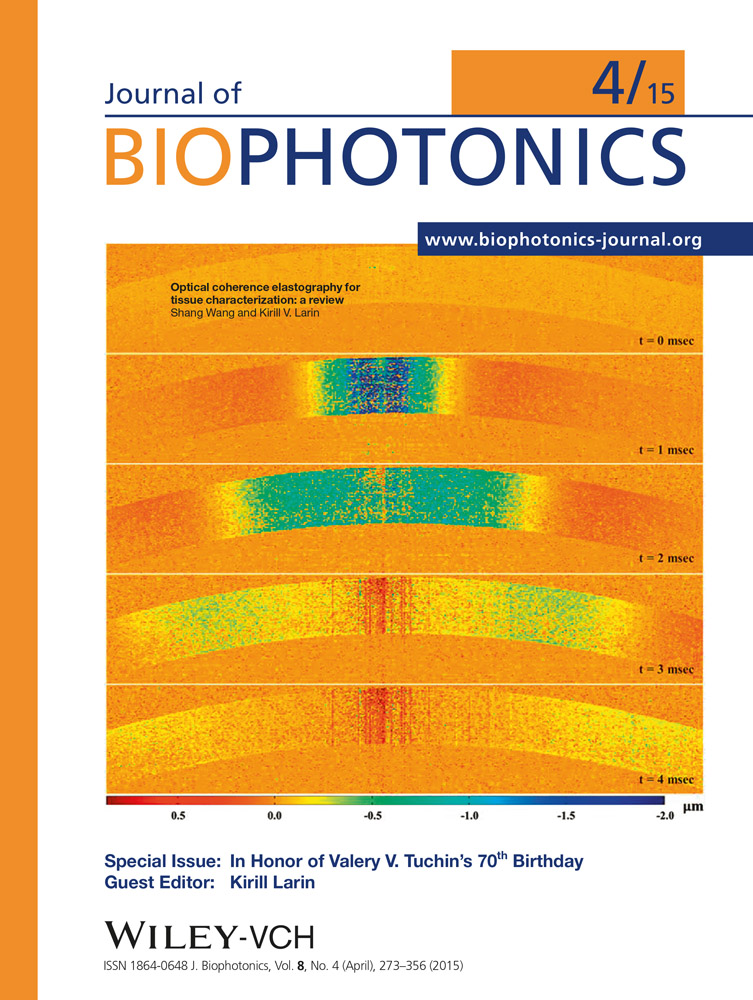Application of circularly polarized light for non-invasive diagnosis of cancerous tissues and turbid tissue-like scattering media
Abstract
Polarization-based optical techniques have become increasingly popular in the field of biomedical diagnosis. In the current report we exploit the directional awareness of circularly and/or elliptically polarized light backscattered from turbid tissue-like scattering media. We apply circularly and elliptically polarized laser light which illuminates the samples of interest, and a standard optical polarimeter is used to observe the polarization state of light backscattered a few millimeters away from the point of incidence. We demonstrate that the Stokes vector of backscattered light depicted on a Poincaré sphere can be used to assess a turbid tissue-like scattering medium. By tracking the Stokes vector of the detected light on the Poincaré sphere, we investigate the utility of this approach for characterization of cancerous and non-cancerous tissue samples in vitro. The obtained results are discussed in the framework of a phenomenological model and the results of a polarization tracking Monte Carlo model, developed in house.





